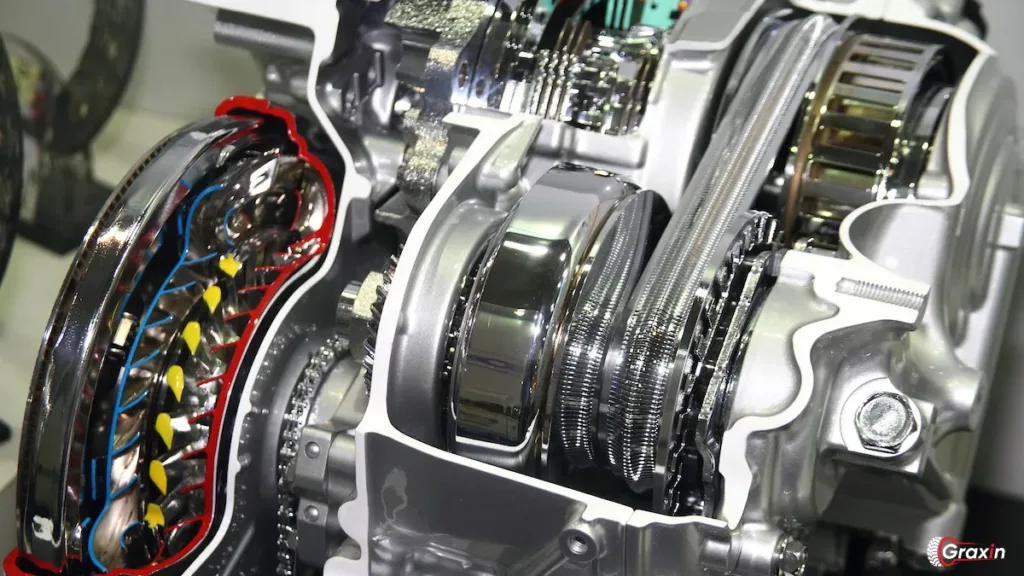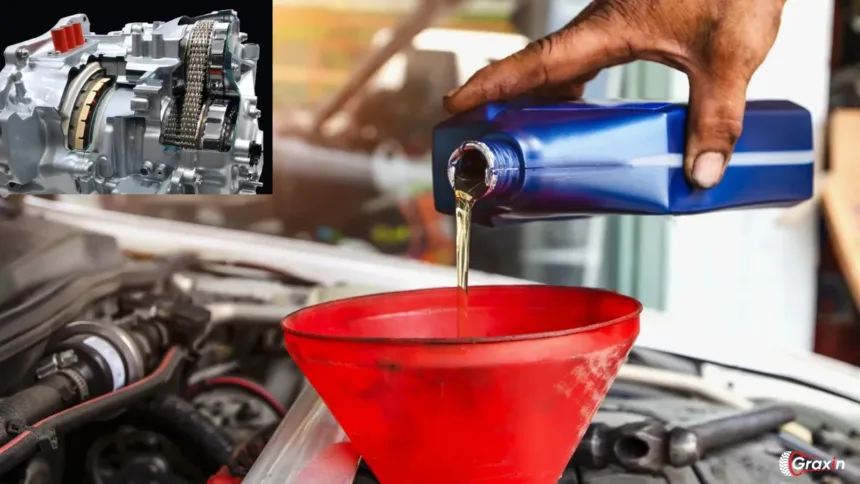Most people think automatic or manual in relation to a car’s transmission. There’s yet another form of transmission, though, called continuously variable transmission, or CVT, which is rather fast growing in popularity. CVTs have a specific type of fluid that needs to be present to function right. So, what is this CVT transmission fluid and why is it such a big deal? In this article, we are going to discuss everything you should know about the CVT fluid, its function within your vehicle and how to maintain it so that it can function at an optimal level.
What is CVT Transmission Fluid?
CVT transmission fluid is the specially formulated lubricant intended for use in such vehicles equipped with continuously variable transmissions. It is, after all, different from traditional automatic transmission fluid (ATF), because CVTs don’t have fixed gear set and call for special requirements by the fluid. The fluid minimizes friction to allow smooth power delivery as well as cool the transmission components directly.
The Key Differences Between CVT Fluid and Regular Transmission Fluid
A transmission fluid that differs in design from other types is the CVT fluid. While regular transmission fluid is specifically made to operate in an automatic gear system with a predefined number of gears, the CVT makes use of a belt and pulley mechanism to infinitely vary its gear ratio. Such fluid management will be required in broader ranges of conditions.
CVT fluid:
- Reduces friction between the belt and pulleys.
- Enhances cooling for better efficiency.
- Maintains optimal pressure within the system.
Automatic transmission fluid simply isn’t built to handle these requirements, making the use of CVT fluid essential in vehicles with this type of transmission.
Why CVT Fluid is Essential for Your Vehicle

Using the right fluid is critical to the performance and longevity of your transmission. CVT transmissions are highly sensitive to the fluid used, and the wrong fluid can cause serious damage to the system. CVT fluid plays a role in:
- Ensuring smooth shifting without the hard jerks associated with automatic transmissions.
- Reducing wear and tear on internal components.
- Preventing overheating, a common issue with improper or low-quality fluid.
By choosing the right CVT transmission fluid, you’re protecting one of the most vital parts of your vehicle.
How Does CVT Fluid Work?
The purpose that the CVT transmission fluid acts on is to lubricate, cool, and apply hydraulic pressure. As the vehicle travels, fluid flows through the transmission system to make sure that the belt and pulley mechanism run with less friction. It is also assisting in heat dissipation so that the engine doesn’t overheat the transmission, plus prevents metal-to-metal friction that may cause wear and tear.
The Role of Hydraulic Pressure
In a CVT, hydraulic pressure is critical because it allows the transmission to adjust the belt and pulley system for a smooth driving experience. CVT fluid ensures that the pressure remains at an optimal level, allowing the transmission to change ratios seamlessly.
When Should You Change Your CVT Transmission Fluid?
Just as motor oil, a transmission fluid has to be changed regularly to be effective. CVT fluid usually needs changing every 30,000 to 50,000 miles, though it might need changing in much shorter periods sometimes. Those changes depend on the type of your vehicle, driving habits, and conditions under which one operates a vehicle.
Signs Your CVT Fluid Needs to Be Changed
Here are a few signs that it may be time to change your CVT fluid:
- Delayed shifting or a hesitation when accelerating.
- Strange noises, like whining or grinding, coming from the transmission.
- Transmission overheating, indicated by a dashboard warning light.
If you notice any of these symptoms, it’s a good idea to get your vehicle checked and the CVT fluid replaced.
How to Check CVT Fluid Levels
Keeping an eye on your CVT fluid levels is crucial to ensure your transmission stays in good health. Here’s a step-by-step guide to checking your CVT fluid levels:
- Park your vehicle on a level surface.
- Turn off the engine and wait for it to cool down.
- Locate the transmission dipstick, usually found near the engine bay.
- Pull the dipstick out, wipe it clean, and insert it back in fully.
- Pull it out again to check the fluid level and condition. The fluid should be clear or slightly amber.
If the fluid looks dirty or has a burnt smell, it’s time for a replacement.
Choosing the Right CVT Transmission Fluid for Your Vehicle

Not all CVT transmission fluids are equal. Every manufacturer of vehicles has its recommended fluid for their CVT systems. Always check your owner’s manual to ensure that you are using the fluid recommended by your vehicle. Using the wrong fluid can lead to improper operation and possibly damage to your transmission.
Synthetic VS Conventional CVT Fluid
Many modern CVT fluids are synthetic, offering better protection and performance compared to conventional fluids. Synthetic fluids tend to have:
- Better heat resistance.
- Longer life expectancy.
- Improved fuel efficiency due to reduced friction.
While synthetic fluid may cost a bit more, its benefits in terms of longevity and performance often make it a worthwhile investment.
Can You Use Automatic Transmission Fluid (ATF) in a CVT?
This is a common question, and the short answer is no. Automatic transmission fluid is designed for systems with fixed gears, not for the continuous operation of a CVT. Using ATF in a CVT system can lead to premature wear, overheating, and even complete transmission failure.
DIY VS Professional CVT Fluid Change
While it’s possible to change your CVT transmission fluid yourself, it can be a tricky task due to the specific requirements and tools needed for some vehicles. It’s always a good idea to weigh the pros and cons of doing it yourself versus taking it to a professional.
DIY Tips for Changing CVT Fluid
If you decide to change your CVT fluid yourself, here are a few tips:
- Make sure you have the right tools, including a drain pan, funnel, and the correct CVT fluid.
- Check your owner’s manual for specific instructions regarding fluid quantity and type.
- After draining the old fluid, be sure to properly dispose of it according to local environmental regulations.
If you’re unsure or uncomfortable with the process, taking it to a professional is usually the safer option.
Common Myths About CVT Transmission Fluid
There are plenty of myths floating around about CVT transmission fluid, and it’s important to separate fact from fiction:
- Myth: CVT fluid never needs to be changed.
Fact: Like all vehicle fluids, CVT fluid degrades over time and needs regular changes. - Myth: Any transmission fluid will work in a CVT.
Fact: CVT systems require specific fluid designed to handle their unique operations. - Myth: CVT transmissions are unreliable because of their fluid.
Fact: While CVTs do require proper maintenance, they are generally very reliable when cared for correctly.
Conclusion
The most important role, however, is played by the CVT transmission fluid regarding the health and capabilities of your car’s transmission. Knowing why you need to change it, knowing how it works, and knowing when to replace it can be the key to protecting your transmission’s lifespan for a longer period of time. Proper maintenance, right type of fluid, all together make a difference between costly repairs down the line and a smoother ride, maintenance, and peace of mind.
FAQs
1. How often should CVT transmission fluid be changed?
Most manufacturers recommend changing CVT fluid every 30,000 to 50,000 miles, depending on driving conditions.
2. What happens if I use the wrong fluid in my CVT?
Using the wrong fluid can lead to improper transmission operation, overheating, and even damage to the system.
3. Can I change CVT transmission fluid myself?
Yes, but it’s a challenging task that requires specific tools and knowledge. If you’re unsure, it’s better to seek professional help.
4. What are the signs of low CVT fluid?
Common signs include delayed shifting, strange noises from the transmission, and overheating.
5. Is synthetic CVT fluid better than conventional?
Synthetic CVT fluid offers better heat resistance, longer life, and improved performance, making it a popular choice for many drivers.
Also Read: 1970 Ford Bronco: A Deep Dive into its Legacy and Charm







